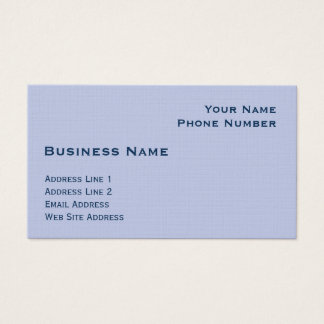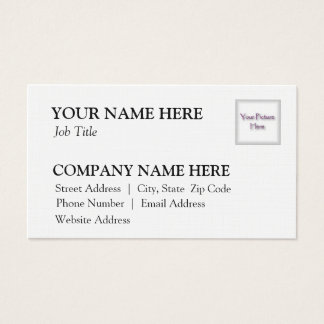Monday, March 30, 2020
The Executive Suite: 15% Off School Hall Pass Pads
The Executive Suite: 15% Off School Hall Pass Pads: A great way to keep an eye on student movements outside the classroom and improve school safety. Our hall passes have room for the date, st...
Lessons learned from past health crises
As the threat of COVID-19 rages and everyone is worried about the future, it helps me to remember that past health crises have proven that these kinds of challenges also present an opportunity to be the best versions of ourselves.
Fifteen years ago, I was serving in the Superdome after Hurricane Katrina—where 25,000 people were being treated after massive flooding hit New Orleans and killed 1,200 people.
Fire alarms were going off nonstop, our disaster response team (New Mexico DMAT) and I hadn’t slept for over 36 hours, and we had very little information from the outside world about how long we’d be there and how many people would need care. We had an extremely limited capacity to evacuate patients; we were doing helicopter evacuations only. We were anxious about the escalating situation and our personal safety, but we also had a mission to accomplish – none of the people coming into the Superdome had anywhere to go and we were their only healthcare resource.
From this experience, our team learned that despite the anxieties we felt, they paled in comparison to those of the people we were treating. These people had just lost their homes and all their possessions and had no idea what tomorrow would bring. Yet they were also understanding and appreciative of any support we could give them.
As we navigate our current public health crisis, and treat and cope with COVID-19, I encourage our caregivers across the country to remember that you’re not alone in being fearful and having anxieties. Share thoughts and anxieties with those around you. But also, when it’s needed, put those fears aside and reach out with hope and love for your colleagues and patients. We’re all in this together. Even our colleagues who aren’t here with us, who are working at home for the sake of social distancing, are doing community good.
The lesson I learned from Katrina was this: When faced with disasters, people in general become more altruistic, more appreciative, and more mindful of the people around them. At times like this, you have to remember why you entered this field. You worked hard and were accepted into a school to learn a healthcare profession, and it helps to remember you have been long preparing to face something just like this.
When we were presented with the escalating impacts of the novel coronavirus, all our teams at Intermountain Healthcare quickly stood up to apply the system’s full capacity to help our community be ahead of this. We’ve very aggressively leaned into it and taken bold action in canceling elective surgeries, implementing social distancing, and working collaboratively with other healthcare systems and the government to protect our communities. I’ve been proud to see that.
Disasters present daunting challenges, but when all the frustration of electronic health records and the confusion about billing goes away, you can be at the bedside of a patient who has nowhere else to turn. You can be there when others couldn’t or wouldn’t be there. We have the opportunity to become better as individuals and better as a healthcare system because of this.
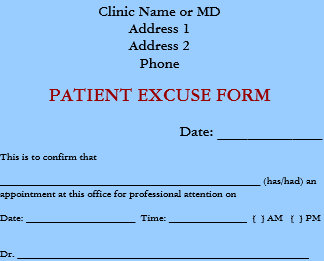
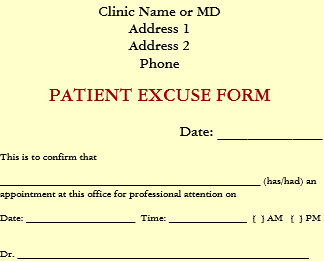
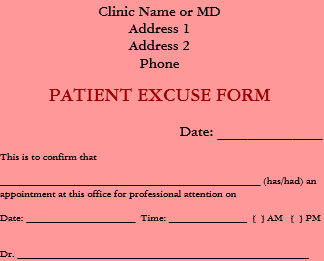
Fifteen years ago, I was serving in the Superdome after Hurricane Katrina—where 25,000 people were being treated after massive flooding hit New Orleans and killed 1,200 people.
Fire alarms were going off nonstop, our disaster response team (New Mexico DMAT) and I hadn’t slept for over 36 hours, and we had very little information from the outside world about how long we’d be there and how many people would need care. We had an extremely limited capacity to evacuate patients; we were doing helicopter evacuations only. We were anxious about the escalating situation and our personal safety, but we also had a mission to accomplish – none of the people coming into the Superdome had anywhere to go and we were their only healthcare resource.
From this experience, our team learned that despite the anxieties we felt, they paled in comparison to those of the people we were treating. These people had just lost their homes and all their possessions and had no idea what tomorrow would bring. Yet they were also understanding and appreciative of any support we could give them.
As we navigate our current public health crisis, and treat and cope with COVID-19, I encourage our caregivers across the country to remember that you’re not alone in being fearful and having anxieties. Share thoughts and anxieties with those around you. But also, when it’s needed, put those fears aside and reach out with hope and love for your colleagues and patients. We’re all in this together. Even our colleagues who aren’t here with us, who are working at home for the sake of social distancing, are doing community good.
The lesson I learned from Katrina was this: When faced with disasters, people in general become more altruistic, more appreciative, and more mindful of the people around them. At times like this, you have to remember why you entered this field. You worked hard and were accepted into a school to learn a healthcare profession, and it helps to remember you have been long preparing to face something just like this.
When we were presented with the escalating impacts of the novel coronavirus, all our teams at Intermountain Healthcare quickly stood up to apply the system’s full capacity to help our community be ahead of this. We’ve very aggressively leaned into it and taken bold action in canceling elective surgeries, implementing social distancing, and working collaboratively with other healthcare systems and the government to protect our communities. I’ve been proud to see that.
Disasters present daunting challenges, but when all the frustration of electronic health records and the confusion about billing goes away, you can be at the bedside of a patient who has nowhere else to turn. You can be there when others couldn’t or wouldn’t be there. We have the opportunity to become better as individuals and better as a healthcare system because of this.
15% Off Medical Practice Supplies
VIEW ALL



VIEW ALL
The Executive Suite: 15% Off Medical Practice Supplies
The Executive Suite: 15% Off Medical Practice Supplies: 15% Off Medical Practice Supplies VIEW ALL Manual Prescription Pad (Large - Yellow) Manual Prescription Pad (Large - ...
Family First Coronavirus Response Act: What physicians need to know
Small physician practices have a lot of questions about The Family First Coronavirus Response Act (“FFCRS”), which was signed into law on March 18, 2020. As part of this Act, Congress enacted the Emergency Family and Medical Leave Expansion Act (“FMLA Expansion Act”) and the Emergency Paid Sick Leave Act (“Sick Leave Act”). The Department of Labor (“Department”) Wage and Hour Division administers the new laws’ paid leave requirements and has come out with guidance that can help physician practices understand how these laws apply to them. Although we continue to see changes and new guidance daily, as of now the following advice applies:
Generally, the FMLA Expansion Act expands FMLA on a temporary basis and allows an eligible employee (employed at least 30 days and has not exhausted FMLA already) to take up to 12 weeks of job protected leave to care for the employee’s child if the child’s school or place of care is closed or the childcare provider is unavailable because of the COVID-19 public health emergency. The first 10 days (reduced from 14) of leave may be unpaid, but the employee can also elect to use any accrued vacation leave, personal leave, or medical or sick leave to cover some or all of the 10-day period. After the initial 10-day period, an employer must start to pay an employee at 2/3 of the employee’s regular compensation rate for the number of hours the employee would otherwise be normally scheduled, capping out at $200 per day/ $10,000 total per employee. Employers with 25 or more employees also have an obligation to return an employee to work at the same or equivalent position upon return to work, while employers with fewer than 25 employees are generally excluded from this requirement if the position no longer exists due the public health emergency, which could include financial consequences to the practice.
Under the Sick Leave Act, employers will be required to provide up to 80 hours of paid sick leave to full-time employees. They must also provide part-time employees with leave based on the average number of hours the part-time employee works. The coverage will apply if:
Employees are entitled to use of the paid sick time regardless of their length of employment. Total paid leave (for items 1-3) is capped at $511 per day/$5,100 in the aggregate per employee. The cap is $200 per day/$2,000 in the aggregate per employee for leave, for items 4-6.
Both of these acts apply to certain public employers and private employers with fewer than 500 employees. Small businesses with fewer than 50 employees may qualify for an exemption from the requirement if it would jeopardize the viability of the business as a going concern. To take advantage of a small business exemption, the practice should document why the practice would be harmed if it offered the benefits. The exact criteria for an exemption will be set forth by the Department in more detail in forthcoming regulations.
Employers who employ “healthcare providers” or “emergency responders” may currently elect to exclude such employees from eligibility for these laws. The definition of healthcare worker appears to be taken from Family and Medical Leave Act and includes medical/osteopathy doctors; podiatrists, dentists, clinical psychologists, optometrists, chiropractors, nurse practitioners, nurse midwives, clinical social workers, and physician assistants. Under both Acts, the Department of Labor is given the authority to issue regulations “for good cause” by which health care providers and emergency responders are excluded from the definition of “employee” and thus be ineligible for benefits. We await further details from the Department on this language.
The actual effective date of these laws will be April 1, 2020 and will cover events occurring through December 31, 2020. These laws are not retroactive. Paid sick time provided under these laws will not carry over from one year to the next and employees are not entitled to reimbursement for unused leave upon termination, resignation, retirement or other separation from employment.
Every practice needs to assess whether or not it can afford to continue operations, particularly if its business relates to services which are elective or unnecessary during this COVID-19 crisis. Make a full assessment of all practice staff and decide what the practice can and cannot afford and who is essential to any ongoing operations. If you decide to keep some staff employed while laying off other employees, make sure you make those decisions on a legitimate, non-discriminatory basis, as federal and state discrimination laws remain in effect. Also, make sure you know what unemployment benefits are being offered in your state, from which your employees may benefit during the pandemic. Employers should also review any employees with contracts and see whether new arrangements can be reached in writing for the benefit of all parties. If not, the practice should consider providing notice of termination to such contracted employees (in accordance with the contract) so the clock starts to run while the parties negotiate and/or the practice recovers. In the worst-case scenario, the practice will be obligated to cover compensation and benefits through the notice period. Failure to follow your contracts properly will expose the practice to a breach of contract claim so a practice should avoid terminating physicians “for cause” unless contract language clearly supports such a termination.
This is a difficult time for the entire country and physician practices are no exception. Most physician practices are likely too small to be covered by these new laws and should watch for guidance on how to be exempted from coverage. If you are uncertain how these new laws apply to your practice, please talk with counsel.



What is the FMLA Expansion Act?
Generally, the FMLA Expansion Act expands FMLA on a temporary basis and allows an eligible employee (employed at least 30 days and has not exhausted FMLA already) to take up to 12 weeks of job protected leave to care for the employee’s child if the child’s school or place of care is closed or the childcare provider is unavailable because of the COVID-19 public health emergency. The first 10 days (reduced from 14) of leave may be unpaid, but the employee can also elect to use any accrued vacation leave, personal leave, or medical or sick leave to cover some or all of the 10-day period. After the initial 10-day period, an employer must start to pay an employee at 2/3 of the employee’s regular compensation rate for the number of hours the employee would otherwise be normally scheduled, capping out at $200 per day/ $10,000 total per employee. Employers with 25 or more employees also have an obligation to return an employee to work at the same or equivalent position upon return to work, while employers with fewer than 25 employees are generally excluded from this requirement if the position no longer exists due the public health emergency, which could include financial consequences to the practice.
What is the Sick Leave Act?
Under the Sick Leave Act, employers will be required to provide up to 80 hours of paid sick leave to full-time employees. They must also provide part-time employees with leave based on the average number of hours the part-time employee works. The coverage will apply if:
- The employee is subject to a federal, state or local quarantine or isolation order related to COVID-19.
- The employee has been advised by a health care provider to self-quarantine due to COVID-19 concerns.
- The employee is experiencing symptoms of COVID-19 and seeking medical diagnosis.
- The employee is caring for an individual subject to a quarantine or isolation order, or who has been advised to self-quarantine.
- The employee is caring for a child whose school or place of care has been closed, or the child care provider is unavailable due to COVID-19 precautions.
- The employee is experiencing any other substantially similar condition specified by Health and Human Services (“HHS”) in consultation with the Department of Treasury and Department of Labor.
Employees are entitled to use of the paid sick time regardless of their length of employment. Total paid leave (for items 1-3) is capped at $511 per day/$5,100 in the aggregate per employee. The cap is $200 per day/$2,000 in the aggregate per employee for leave, for items 4-6.
Does the FMLA Expansion Act and Sick Leave Act apply to my medical practice?
Both of these acts apply to certain public employers and private employers with fewer than 500 employees. Small businesses with fewer than 50 employees may qualify for an exemption from the requirement if it would jeopardize the viability of the business as a going concern. To take advantage of a small business exemption, the practice should document why the practice would be harmed if it offered the benefits. The exact criteria for an exemption will be set forth by the Department in more detail in forthcoming regulations.
Does the FMLA Expansion Act and Sick Leave Act apply to health care providers?
Employers who employ “healthcare providers” or “emergency responders” may currently elect to exclude such employees from eligibility for these laws. The definition of healthcare worker appears to be taken from Family and Medical Leave Act and includes medical/osteopathy doctors; podiatrists, dentists, clinical psychologists, optometrists, chiropractors, nurse practitioners, nurse midwives, clinical social workers, and physician assistants. Under both Acts, the Department of Labor is given the authority to issue regulations “for good cause” by which health care providers and emergency responders are excluded from the definition of “employee” and thus be ineligible for benefits. We await further details from the Department on this language.
When will these laws take effect?
The actual effective date of these laws will be April 1, 2020 and will cover events occurring through December 31, 2020. These laws are not retroactive. Paid sick time provided under these laws will not carry over from one year to the next and employees are not entitled to reimbursement for unused leave upon termination, resignation, retirement or other separation from employment.
Should I lay off my employees?
Every practice needs to assess whether or not it can afford to continue operations, particularly if its business relates to services which are elective or unnecessary during this COVID-19 crisis. Make a full assessment of all practice staff and decide what the practice can and cannot afford and who is essential to any ongoing operations. If you decide to keep some staff employed while laying off other employees, make sure you make those decisions on a legitimate, non-discriminatory basis, as federal and state discrimination laws remain in effect. Also, make sure you know what unemployment benefits are being offered in your state, from which your employees may benefit during the pandemic. Employers should also review any employees with contracts and see whether new arrangements can be reached in writing for the benefit of all parties. If not, the practice should consider providing notice of termination to such contracted employees (in accordance with the contract) so the clock starts to run while the parties negotiate and/or the practice recovers. In the worst-case scenario, the practice will be obligated to cover compensation and benefits through the notice period. Failure to follow your contracts properly will expose the practice to a breach of contract claim so a practice should avoid terminating physicians “for cause” unless contract language clearly supports such a termination.
This is a difficult time for the entire country and physician practices are no exception. Most physician practices are likely too small to be covered by these new laws and should watch for guidance on how to be exempted from coverage. If you are uncertain how these new laws apply to your practice, please talk with counsel.
15% Off Medical Practice Supplies
VIEW ALL



VIEW ALL
Saturday, March 28, 2020
The Executive Suite: 15% Off Medical Practice Supplies
The Executive Suite: 15% Off Medical Practice Supplies: 15% Off Medical Practice Supplies VIEW ALL Manual Prescription Pad (Large - Yellow) Manual Prescription Pad (Large - ...
This Is the #1 Productivity Hack You’re Not Using
These days everyone loves to talk about “productivity hacks,” the simple habit changes, behaviors, or actions that can help you work more efficiently and/or get more done in the span of a day. It makes sense why they’re popular, since we’re all incredibly busy and eager to achieve more.
But many articles strive to list as many productivity hacks as possible, telling you to do everything from drinking more water to putting more plants in your office.
To be fair, these hacks are all worth knowing, but in my experience, it’s better to focus on one big change than dozens of smaller changes; not only is it more manageable, it’s also more rewarding.
So in this article, I’m going to tell you about the one productivity hack you’re (probably) not using: flow optimization.
First, you need to know what “flow” is, and why it’s so important. In the field of psychology, a flow state is a mental state when a person is fully immersed in what they’re doing. Colloquially, you might hear it called being “in the zone.”
In any case, when you’re in a state of flow, you’re hyper-focused—which means you’re less susceptible to distraction, and you’re much more effective at accomplishing tasks that require concentration. Additionally, people in a flow state tend to lose track of time.
While this may seem like a bad thing (since so many productivity hacks focus on time management), it can actually improve your bottom-line results since you won’t be constantly checking the clock or agonizing over what you’re doing.
When working in a flow state, you’ll be not only more productive, but more satisfied with your work, leading to higher overall happiness—in fact, some experts (including positive psychologist Mihaly Csikszentmihalyi) have suggested that flow is the “secret to happiness.”
Advertisements
That sounds amazing, but how can you achieve flow? For most of us, flow isn’t something we create; it’s something that simply happens to us, without us even realizing until after we break the state.
There are a few competing theories for how flow develops, but the mechanism certainly depends on your attention. If you’re able to devote your attention fully to a given task, you can hypothetically enter a flow state.
For practical purposes, you can think of flow as existing in the nexus between two main variables in a work experience: interest and challenge.
Interest is your level of personal fascination or resonance with a given task. The more personally interested you are in something, the better. If a task is fun, captivating, or otherwise entertaining, it’s more likely to help you achieve flow.
Challenge represents the level of difficulty you face in this task. Here, you’ll be seeking a balance. If a task isn’t challenging enough, you won’t devote much attention to it. Conversely, if a task is too challenging, you won’t be able to enter a flow.
There are some other factors you’ll want to consider as well. For example, to achieve flow, it’s important that you feel a sense of control over the task; merely witnessing a meeting unfold is unlikely to help you produce a flow state.
15% Off All Business Cards
But many articles strive to list as many productivity hacks as possible, telling you to do everything from drinking more water to putting more plants in your office.
To be fair, these hacks are all worth knowing, but in my experience, it’s better to focus on one big change than dozens of smaller changes; not only is it more manageable, it’s also more rewarding.
So in this article, I’m going to tell you about the one productivity hack you’re (probably) not using: flow optimization.
What is flow?
First, you need to know what “flow” is, and why it’s so important. In the field of psychology, a flow state is a mental state when a person is fully immersed in what they’re doing. Colloquially, you might hear it called being “in the zone.”
In any case, when you’re in a state of flow, you’re hyper-focused—which means you’re less susceptible to distraction, and you’re much more effective at accomplishing tasks that require concentration. Additionally, people in a flow state tend to lose track of time.
While this may seem like a bad thing (since so many productivity hacks focus on time management), it can actually improve your bottom-line results since you won’t be constantly checking the clock or agonizing over what you’re doing.
When working in a flow state, you’ll be not only more productive, but more satisfied with your work, leading to higher overall happiness—in fact, some experts (including positive psychologist Mihaly Csikszentmihalyi) have suggested that flow is the “secret to happiness.”
Advertisements
Achieving flow
That sounds amazing, but how can you achieve flow? For most of us, flow isn’t something we create; it’s something that simply happens to us, without us even realizing until after we break the state.
There are a few competing theories for how flow develops, but the mechanism certainly depends on your attention. If you’re able to devote your attention fully to a given task, you can hypothetically enter a flow state.
For practical purposes, you can think of flow as existing in the nexus between two main variables in a work experience: interest and challenge.
Interest is your level of personal fascination or resonance with a given task. The more personally interested you are in something, the better. If a task is fun, captivating, or otherwise entertaining, it’s more likely to help you achieve flow.
Challenge represents the level of difficulty you face in this task. Here, you’ll be seeking a balance. If a task isn’t challenging enough, you won’t devote much attention to it. Conversely, if a task is too challenging, you won’t be able to enter a flow.
There are some other factors you’ll want to consider as well. For example, to achieve flow, it’s important that you feel a sense of control over the task; merely witnessing a meeting unfold is unlikely to help you produce a flow state.
15% Off All Business Cards
VIEW ALL
Friday, March 27, 2020
Proper termination of an existing contract
A common question I am asked by physicians is how to properly terminate an existing contract. This is an important question because improper termination, or failure to understand the termination provisions, can lead to legal and financial consequences.
First, most physicians who are simply leaving a job will terminate a contract “without cause.” To do this, the physician must review the contract and find out how much notice is required. In a physician employment agreement, this is typically around 90 days but could be longer or shorter. Sometimes the notice provisions can change over time or not kick in until after a certain time period. For example, a provision might read: “Physician must provide 90 days’ notice of termination after the Initial Term.” This means that during the “Initial Term” (i.e. usually 1-3 years in most physician deals), the physician is locked in and cannot leave the contract without cause. Many physicians are disappointed when they find out they agreed to be locked in by such a provision if they did not understand the terminology in the contract they signed. On the other hand, some physicians use a lock-in period as a means of assuring job security for both parties. For example, an orthopedic surgeon collecting cases for her Boards might want to be assured that no termination without cause can occur for the first two (2) years while the cases are collected.
The time to negotiate the “without cause” termination time frame is before the contract is signed; if a physician needs to leave sooner that the provision allows, this can usually be negotiated by the parties if the employer is willing. Without the employer’s exception, it is important that physicians provide the amount of notice required by the agreement. Failure to do so can be treated as a breach of contract by the employer, which can have significant financial consequences for a physician if the employer pursues damages. Some contracts build in a per diem rate or other type of liquidated damage that must be paid by the physician if the notice is not properly provided or honored. Other repercussions for failure to abide by a notice provision can include a requirement for the physician to pay for a tail insurance policy (where the employer might otherwise have covered it) or the loss of a bonus that would otherwise have been paid.
Many notice provisions in physician contracts can allow an employer to accelerate the last day of employment. This means that even if proper 90 days’ notice is provided, the employer can decide when the physician’s last day will be. This can leave an unprepared physician without a job or source of income. Physicians need to be aware if such an acceleration is permitted in their agreements and again, the time to fight this language is before the contract is signed.
Additionally, some employers can elect to not have a physician work even after they provide proper notice. If a physician is salaried, this is usually not an issue. However, a physician who is permitted to work during a notice period who is paid based on productivity may face a real concern. Employers generally start to reallocate resources and patients once notice is provided, which can greatly impact physician compensation during a notice period despite the physician being willing and able to work. I like to try to work out a compensation approach for the notice period when possible but again, this needs to be addressed when the contract is negotiated.
Another form of “without cause” termination is a non-renewal provision which may sometimes be the only way to terminate a contract. Physicians need to be very careful to provide the notice required by the notice date under such a provision. For example, the provision might state: “Physician may terminate this Agreement by providing notice of non-renewal 90 days prior to the anniversary date of the Agreement each year.” In addition to correctly determining the anniversary date of the agreement, the physician cannot miss the date on which notice must be provided or the contract will renew, and the physician will be locked in until the next opportunity to provide notice arises. This can be a very frustrating experience for a physician who did not understand the provision to which they agreed.
A physician who wants to terminate a contract for cause will need to review the “for cause” provisions in the contract, if any, to see if they fit the bill. Usually, there is at least a standard breach provisions which requires the physician to provide written notice of the breach to the employer and provide the employer an opportunity to cure. This means that the physician cannot assume the contract will end once the notice has been provided and should plan to stay for the entire cure period (and possibly beyond). Terminating a contract for cause can often free a physician from a non-compete or tail obligation, so it is not unusual for an employer to fight the accusation of a breach or try to cure it promptly.
Finally, whether notice is for cause or without cause, it is important to provide the required notice specifically as required by the notice provision in the contract. There is a paragraph in almost every contract that is called “Notice” and describes how and to whom the notice of termination must be provided. Many physicians like to email a termination notice, but if the notice provision requires it be mailed or fedexed instead, the clock on the notice period will not technically start to run until proper notice is offered. This can create timing issues for a physician’s new contract commitments and impact other parts of the contract where timing is key.
Physicians must carefully review their contracts before providing notice of termination and should be prepared for possible consequence if they choose a non-compliant route. The best time to negotiate agreeable termination provisions is before the contract is signed.
First, most physicians who are simply leaving a job will terminate a contract “without cause.” To do this, the physician must review the contract and find out how much notice is required. In a physician employment agreement, this is typically around 90 days but could be longer or shorter. Sometimes the notice provisions can change over time or not kick in until after a certain time period. For example, a provision might read: “Physician must provide 90 days’ notice of termination after the Initial Term.” This means that during the “Initial Term” (i.e. usually 1-3 years in most physician deals), the physician is locked in and cannot leave the contract without cause. Many physicians are disappointed when they find out they agreed to be locked in by such a provision if they did not understand the terminology in the contract they signed. On the other hand, some physicians use a lock-in period as a means of assuring job security for both parties. For example, an orthopedic surgeon collecting cases for her Boards might want to be assured that no termination without cause can occur for the first two (2) years while the cases are collected.
The time to negotiate the “without cause” termination time frame is before the contract is signed; if a physician needs to leave sooner that the provision allows, this can usually be negotiated by the parties if the employer is willing. Without the employer’s exception, it is important that physicians provide the amount of notice required by the agreement. Failure to do so can be treated as a breach of contract by the employer, which can have significant financial consequences for a physician if the employer pursues damages. Some contracts build in a per diem rate or other type of liquidated damage that must be paid by the physician if the notice is not properly provided or honored. Other repercussions for failure to abide by a notice provision can include a requirement for the physician to pay for a tail insurance policy (where the employer might otherwise have covered it) or the loss of a bonus that would otherwise have been paid.
Many notice provisions in physician contracts can allow an employer to accelerate the last day of employment. This means that even if proper 90 days’ notice is provided, the employer can decide when the physician’s last day will be. This can leave an unprepared physician without a job or source of income. Physicians need to be aware if such an acceleration is permitted in their agreements and again, the time to fight this language is before the contract is signed.
Additionally, some employers can elect to not have a physician work even after they provide proper notice. If a physician is salaried, this is usually not an issue. However, a physician who is permitted to work during a notice period who is paid based on productivity may face a real concern. Employers generally start to reallocate resources and patients once notice is provided, which can greatly impact physician compensation during a notice period despite the physician being willing and able to work. I like to try to work out a compensation approach for the notice period when possible but again, this needs to be addressed when the contract is negotiated.
Another form of “without cause” termination is a non-renewal provision which may sometimes be the only way to terminate a contract. Physicians need to be very careful to provide the notice required by the notice date under such a provision. For example, the provision might state: “Physician may terminate this Agreement by providing notice of non-renewal 90 days prior to the anniversary date of the Agreement each year.” In addition to correctly determining the anniversary date of the agreement, the physician cannot miss the date on which notice must be provided or the contract will renew, and the physician will be locked in until the next opportunity to provide notice arises. This can be a very frustrating experience for a physician who did not understand the provision to which they agreed.
A physician who wants to terminate a contract for cause will need to review the “for cause” provisions in the contract, if any, to see if they fit the bill. Usually, there is at least a standard breach provisions which requires the physician to provide written notice of the breach to the employer and provide the employer an opportunity to cure. This means that the physician cannot assume the contract will end once the notice has been provided and should plan to stay for the entire cure period (and possibly beyond). Terminating a contract for cause can often free a physician from a non-compete or tail obligation, so it is not unusual for an employer to fight the accusation of a breach or try to cure it promptly.
Finally, whether notice is for cause or without cause, it is important to provide the required notice specifically as required by the notice provision in the contract. There is a paragraph in almost every contract that is called “Notice” and describes how and to whom the notice of termination must be provided. Many physicians like to email a termination notice, but if the notice provision requires it be mailed or fedexed instead, the clock on the notice period will not technically start to run until proper notice is offered. This can create timing issues for a physician’s new contract commitments and impact other parts of the contract where timing is key.
Physicians must carefully review their contracts before providing notice of termination and should be prepared for possible consequence if they choose a non-compliant route. The best time to negotiate agreeable termination provisions is before the contract is signed.
15% Off All Business Cards
VIEW ALL CARDS
$60.05
$60.05
$62.55
$60.05
$60.05
$60.05
$60.05
$52.55
$60.05
$60.05
Thursday, March 26, 2020
The Executive Suite: Tips for Starting Your Own Community Health Clinic...
The Executive Suite: Tips for Starting Your Own Community Health Clinic...: Community health clinics provide valuable medical services to people in the community who are uninsured or under-insured and have few or no...
The Executive Suite: How to Write a Mission Statement
The Executive Suite: How to Write a Mission Statement: Writing a company mission statement will help you and your employees focus on a common goal and give everyone a benchmark to gauge performa...
The Executive Suite: 15% Off All Business Cards
The Executive Suite: 15% Off All Business Cards: 15% Off All Business Cards VIEW ALL Linen Business Card (White) $65.40 Pale Grey Pearl Finish Business Card $60.0...
How to manage COVID-19 medical waste
In the world of healthcare, America is currently faced with one of the most daunting challenges in recent memory. The coronavirus has swept through the world in a very short period, causing widespread concern for many countries worldwide. As laboratories the world over race for a vaccine, everyone must do their part to slow and contain the spread of the virus as best that we can. As practitioners in the healthcare industry, you are at the forefront of this fight and must ensure that your practices are clean, your patients are safe, and perhaps most importantly, that all COVID-19 medical waste is disposed of as safely and effectively as possible.
The threat of COVID-19 took the world by storm relatively quickly, in part because at the time of the initial outbreak, only a few patients required any sort of hospitalization. The surprise global effect of COVID-19 has caused a shortage in certain supplies, such as masks. Indeed, solid waste such as personal protective equipment represents the most considerable volume of waste generated by the pandemic. In contrast to other epidemics of the past, such as the Ebola crisis, patients themselves are not producing large quantities of biohazard or pathological waste. If there is a silver lining to be observed in this crisis, this is certainly it.
It is important to note that any waste that has been in contact with a facility that is housing a COVID-19 patient or a person who has been exposed to the coronavirus, including decontamination materials, is to be treated as regulated medical waste.
Despite how it has been largely advertised to the public, the novel coronavirus is not a truly airborne disease, as the primary means of transference are thought to be through respiratory droplets (produced from a cough or a sneeze). It has also been thought that persons who touch a surface that has been touched by a carrier of the disease and then touch their own mouth or other facial orifices could also contract the disease this way, though this has not been thought of as the primary means for the spread of the disease. Furthermore, this means of transference can be circumvented through habitual discipline. Considering all of these factors, it is very unlikely for a person who is not in regular contact with a carrier of the disease to contract it. The CDC has recommended that control of COVID-19 waste be handled through routine procedure, with personal protective equipment standard to infection control. For those workers that may be in close proximity to carriers of the disease, airborne protective equipment is advised as well.
As always, your best bet in tackling the COVID-19 pandemic is to contract a trusted and OSHA-compliant medical waste management expert that can handle all of your needs on your schedule. Drivers in the medical waste community are prepared with airborne safety masks as well as sanitizer ready in their trucks. The novel coronavirus pandemic is certainly one of the greatest challenges that the American healthcare system has ever faced, but by following strict regulation and by observing



all safety protocols every step of the way, it is a challenge that can be overcome.
The Unique Challenges of COVID-19
The threat of COVID-19 took the world by storm relatively quickly, in part because at the time of the initial outbreak, only a few patients required any sort of hospitalization. The surprise global effect of COVID-19 has caused a shortage in certain supplies, such as masks. Indeed, solid waste such as personal protective equipment represents the most considerable volume of waste generated by the pandemic. In contrast to other epidemics of the past, such as the Ebola crisis, patients themselves are not producing large quantities of biohazard or pathological waste. If there is a silver lining to be observed in this crisis, this is certainly it.
It is important to note that any waste that has been in contact with a facility that is housing a COVID-19 patient or a person who has been exposed to the coronavirus, including decontamination materials, is to be treated as regulated medical waste.
Risk of Contagion
Despite how it has been largely advertised to the public, the novel coronavirus is not a truly airborne disease, as the primary means of transference are thought to be through respiratory droplets (produced from a cough or a sneeze). It has also been thought that persons who touch a surface that has been touched by a carrier of the disease and then touch their own mouth or other facial orifices could also contract the disease this way, though this has not been thought of as the primary means for the spread of the disease. Furthermore, this means of transference can be circumvented through habitual discipline. Considering all of these factors, it is very unlikely for a person who is not in regular contact with a carrier of the disease to contract it. The CDC has recommended that control of COVID-19 waste be handled through routine procedure, with personal protective equipment standard to infection control. For those workers that may be in close proximity to carriers of the disease, airborne protective equipment is advised as well.
Medical Waste Experts are Standing By to Tackle the Challenge
As always, your best bet in tackling the COVID-19 pandemic is to contract a trusted and OSHA-compliant medical waste management expert that can handle all of your needs on your schedule. Drivers in the medical waste community are prepared with airborne safety masks as well as sanitizer ready in their trucks. The novel coronavirus pandemic is certainly one of the greatest challenges that the American healthcare system has ever faced, but by following strict regulation and by observing
15% Off Medical Practice Supplies
VIEW ALL



VIEW ALL
all safety protocols every step of the way, it is a challenge that can be overcome.
Wednesday, March 25, 2020
Expert Advice: Responding to patient panic about the Coronavirus
Ask patients open-ended questions when they call the physician practice panicked about the novel coronavirus. That’s the first piece of advice from Stephen Benning, PhD, professor of psychology at University of Nevada, Las Vegas. “As clinicians, we have all kinds of questions that might panic people, but it’s up to the patient as to what’s actually bothering them,” he counsels.
For example, some patients may be worried about having COVID-19, the infectious disease, whereas others are concerned about their parents or other family members contracting the virus. Still, other people may be concerned about losing their job due to governmental efforts to prevent increased community spread of the virus.
His point? “If we, as clinicians, don’t ask open-ended questions, our answers may not be applicable,” says Benning.
Provide accurate information about COVID-19 testing
Tista Ghosh, MD, MPH, an epidemiologist and senior director of impact evaluation at San Francisco-based Grand Rounds, points out that many patients call physician practices because they want to get tested for the virus. Updated information about COVID-19 testing should be provided to the person responsible for answering the practice’s phone, she says.
In addition, the practice should record testing information on its pre-recorded message that greets patients when they call, says Ghosh, who previously served as Colorado’s director of public health and chief medical officer.
Be honest and comforting
Physician practices should communicate the accurate, current information they have about the coronavirus, says Simon Rego, PsyD, chief of psychology at Montefiore Medical Center in Bronx, N.Y.
For example, according to the Centers for Disease Control and Prevention (CDC), the elderly are at higher risk for severe illness with the coronavirus. In fact, the federal agency reports that 8 out of 10 deaths in the United States due to the virus occurred among adults 65 years of age and older. CDC also says that the elderly and people of any age with serious medical conditions, such as heart disease, diabetes, or lung disease, may be at higher risk for serious complications.
In addition, the CDC revealed that 38% of people sick enough to require hospitalization due to the virus were under the age of 55.
The most important thing is to provide patients with reliable information, says Rego. He points specifically to the World Health Organization and the CDC, which are constantly updating their resources and offering guidelines on hygiene practices and travel alerts.
“Educating the patient starts with alleviating their concerns. Part of that is educating them about reliable sources of information,” he adds. State and local health departments are additional sources of reliable information, says Rose Willis, JD, an attorney with Detroit-based law firm Dickinson Wright, where she advises physician practice and hospital clients.
Paul Gionfriddo, president and CEO of Mental Health America, advised in a statement that healthcare providers should do the following:
Benning says the person answering the practice’s phone should tell patients when they should expect to get a call back, if their concern can’t be addressed during the initial phone call. That time period should allow the team member to consult with a clinician. Communicating a timeline can help alleviate some uncertainty for patients, he explains.
Don’t get ahead of the science
Bill Hopkins, JD, healthcare partner in the Austin, Texas office of law firm Shackelford, Bowen, McKinley, and Norton, agrees that patients are looking for reassurance and comfort. “While that sounds nice and wonderful to the average person, from a clinical and liability standpoint, that is where the trouble areas are for healthcare providers,” he explains.
Being reassuring and comforting is easier when a clinical condition is known and predictable, but healthcare providers don’t have this level of information about the coronavirus, points out Hopkins. Specifically, “overzealous words of reassurance and comfort can come back to haunt a healthcare provider if their compassion allows them to provide a false sense of security to [a] patient that isn’t backed in anything other than a desire to get the patient to stop panicking and calm down,” he advises.
If the information provided by the physician practice later turns out to be inaccurate or not backed up by clinical information, the patient could come after the practice for being negligent in providing that information, regardless of the intent to calm the patient, says Hopkins.
“Ultimately, healthcare providers should always err on the side of providing factual and clinical information, as well as compassion for the fear that the patient is feeling, but should always refrain from ‘going too far’ or ‘beyond the science’ in making promises or predictions that they can’t keep and could be accountable for if they’re wrong and didn’t have a clinical basis for the statements,” he says.
Align resources appropriately
The practice administrator must plan staffing for answering the phone and ensuring the environmental cleanliness of the practice, says Ghosh, a former member of the U.S. Preventive Services Task Force, which provides science-based recommendations to improve population health.
It may be appropriate to invest in a virtual-call provider that can respond to patient calls, she adds. Physician practices that are part of large health networks can also inquire about tapping into their call-center resources.
Willis recommends providing a checklist to the person who answers the practice’s phone line. “Front desk people can’t practice medicine. They may have to refer the patient to a provider... make sure they’re having an appropriate dialog about the situation, not the medical piece.”
Coronavirus Response: Doctors can now practice across state lines
Regarding the cleanliness of the practice, Ghosh says it’s important to ensure that the waiting rooms and exams are cleaned frequently. Top of mind should be wiping clean doorknobs, touchpads provided to patients, desk surfaces, and TV remote controls in the waiting room.
Promote virtual care; update practice’s website
Physician practices can use social media to educate patients about telehealth visits, which can reduce the strain on emergency rooms and physician practices, according to Patric Wiesmann, managing director and general manager of Reputation.com’s healthcare and life sciences division.
Patients experiencing anxiety may never call the practice. That’s why it’s important to update individual clinician’s webpages and the practice’s website to include information about telehealth options, he advises.
Protocols developed by the CDC and other governmental entities continue to be updated. Thus, Weismann advises practices to add an emergency response message to the top of their websites and individual provider pages with important updates and information about the virus.
 Manual Prescription Pad (Large - Yellow)
Manual Prescription Pad (Large - Yellow)
 Manual Prescription Pad (Large - Pink)
Manual Prescription Pad (Large - Pink)
 Manual Prescription Pads (Bright Orange)
Manual Prescription Pads (Bright Orange)
 Manual Prescription Pads (Light Pink)
Manual Prescription Pads (Light Pink)
 Manual Prescription Pads (Light Yellow)
Manual Prescription Pads (Light Yellow)
 Manual Prescription Pad (Large - Blue)
Manual Prescription Pad (Large - Blue)
For example, some patients may be worried about having COVID-19, the infectious disease, whereas others are concerned about their parents or other family members contracting the virus. Still, other people may be concerned about losing their job due to governmental efforts to prevent increased community spread of the virus.
His point? “If we, as clinicians, don’t ask open-ended questions, our answers may not be applicable,” says Benning.
Provide accurate information about COVID-19 testing
Tista Ghosh, MD, MPH, an epidemiologist and senior director of impact evaluation at San Francisco-based Grand Rounds, points out that many patients call physician practices because they want to get tested for the virus. Updated information about COVID-19 testing should be provided to the person responsible for answering the practice’s phone, she says.
In addition, the practice should record testing information on its pre-recorded message that greets patients when they call, says Ghosh, who previously served as Colorado’s director of public health and chief medical officer.
Be honest and comforting
Physician practices should communicate the accurate, current information they have about the coronavirus, says Simon Rego, PsyD, chief of psychology at Montefiore Medical Center in Bronx, N.Y.
For example, according to the Centers for Disease Control and Prevention (CDC), the elderly are at higher risk for severe illness with the coronavirus. In fact, the federal agency reports that 8 out of 10 deaths in the United States due to the virus occurred among adults 65 years of age and older. CDC also says that the elderly and people of any age with serious medical conditions, such as heart disease, diabetes, or lung disease, may be at higher risk for serious complications.
In addition, the CDC revealed that 38% of people sick enough to require hospitalization due to the virus were under the age of 55.
The most important thing is to provide patients with reliable information, says Rego. He points specifically to the World Health Organization and the CDC, which are constantly updating their resources and offering guidelines on hygiene practices and travel alerts.
“Educating the patient starts with alleviating their concerns. Part of that is educating them about reliable sources of information,” he adds. State and local health departments are additional sources of reliable information, says Rose Willis, JD, an attorney with Detroit-based law firm Dickinson Wright, where she advises physician practice and hospital clients.
Paul Gionfriddo, president and CEO of Mental Health America, advised in a statement that healthcare providers should do the following:
- Screen all patients for anxiety at both sick- and well-care visits.
- Take extra time with patients to assess the need for more intensive mental-health treatment that they receive right away. He stressed that mental-health effects, if untreated, could last for weeks or months and return unexpectedly.
- Manage healthcare capacity to enable responses to mental health crises as they arise during the next weeks and months.
- Refer patients to a variety of informational and support resources for mental-health follow-up. He also counselled against giving up if no clinicians are immediately available to take a referral. Peer support services are available from his organization’s affiliates, in addition to local advocates across the country who can provide clinical- and non-clinical support services.
Benning says the person answering the practice’s phone should tell patients when they should expect to get a call back, if their concern can’t be addressed during the initial phone call. That time period should allow the team member to consult with a clinician. Communicating a timeline can help alleviate some uncertainty for patients, he explains.
Don’t get ahead of the science
Bill Hopkins, JD, healthcare partner in the Austin, Texas office of law firm Shackelford, Bowen, McKinley, and Norton, agrees that patients are looking for reassurance and comfort. “While that sounds nice and wonderful to the average person, from a clinical and liability standpoint, that is where the trouble areas are for healthcare providers,” he explains.
Being reassuring and comforting is easier when a clinical condition is known and predictable, but healthcare providers don’t have this level of information about the coronavirus, points out Hopkins. Specifically, “overzealous words of reassurance and comfort can come back to haunt a healthcare provider if their compassion allows them to provide a false sense of security to [a] patient that isn’t backed in anything other than a desire to get the patient to stop panicking and calm down,” he advises.
If the information provided by the physician practice later turns out to be inaccurate or not backed up by clinical information, the patient could come after the practice for being negligent in providing that information, regardless of the intent to calm the patient, says Hopkins.
“Ultimately, healthcare providers should always err on the side of providing factual and clinical information, as well as compassion for the fear that the patient is feeling, but should always refrain from ‘going too far’ or ‘beyond the science’ in making promises or predictions that they can’t keep and could be accountable for if they’re wrong and didn’t have a clinical basis for the statements,” he says.
Align resources appropriately
The practice administrator must plan staffing for answering the phone and ensuring the environmental cleanliness of the practice, says Ghosh, a former member of the U.S. Preventive Services Task Force, which provides science-based recommendations to improve population health.
It may be appropriate to invest in a virtual-call provider that can respond to patient calls, she adds. Physician practices that are part of large health networks can also inquire about tapping into their call-center resources.
Willis recommends providing a checklist to the person who answers the practice’s phone line. “Front desk people can’t practice medicine. They may have to refer the patient to a provider... make sure they’re having an appropriate dialog about the situation, not the medical piece.”
Coronavirus Response: Doctors can now practice across state lines
Regarding the cleanliness of the practice, Ghosh says it’s important to ensure that the waiting rooms and exams are cleaned frequently. Top of mind should be wiping clean doorknobs, touchpads provided to patients, desk surfaces, and TV remote controls in the waiting room.
Promote virtual care; update practice’s website
Physician practices can use social media to educate patients about telehealth visits, which can reduce the strain on emergency rooms and physician practices, according to Patric Wiesmann, managing director and general manager of Reputation.com’s healthcare and life sciences division.
Patients experiencing anxiety may never call the practice. That’s why it’s important to update individual clinician’s webpages and the practice’s website to include information about telehealth options, he advises.
Protocols developed by the CDC and other governmental entities continue to be updated. Thus, Weismann advises practices to add an emergency response message to the top of their websites and individual provider pages with important updates and information about the virus.
15% Off Medical Practice Supplies
VIEW ALL
 Manual Prescription Pad (Large - Yellow)
Manual Prescription Pad (Large - Yellow) Manual Prescription Pad (Large - Pink)
Manual Prescription Pad (Large - Pink) Manual Prescription Pads (Bright Orange)
Manual Prescription Pads (Bright Orange) Manual Prescription Pads (Light Pink)
Manual Prescription Pads (Light Pink) Manual Prescription Pads (Light Yellow)
Manual Prescription Pads (Light Yellow) Manual Prescription Pad (Large - Blue)
Manual Prescription Pad (Large - Blue)
__________________________________________________
Appointment Reminder Cards
$44.05
15% Off
$56.30
15% Off
$44.05
15% Off
$44.05
15% Off
$56.30
15% Off
VIEW ALL PRODUCTS
Monday, March 23, 2020
Steps to follow if Physician Practice closures or layoffs become necessary due to Covid-19
Physician practices are currently struggling with how to handle physician and mid-level employment contracts in light of the COVID-19 pandemic. Although a practice may not be “required” to close, many have cancelled elective visits and procedures. This has greatly impacted patient volume and revenue, and may require full closure eventually. Even in practices that must offer some patient services, cutbacks are imminent.
Physician and mid-level employment agreements generally do not contemplate extreme situations such as COVID-19. Most contracts are terminable either without cause (which typically requires 30-90 days prior notice) or for cause. Employment contracts invariably require both the employer and employee to agree to any amendment. As a result, an employer risks potential liability if it unilaterally reduces a provider’s pay or hours.
While there are common law doctrines which arguably provide a basis for a practice not to fulfill its obligations under an employment agreement, the applicability of those doctrines to a situation such as the COVID-19 pandemic is uncertain.
As a result, practices are faced with the need to negotiate with salaried employees for reduced hours and/or compensation in order to remain in operation during this pandemic. Many practices have successfully negotiated such deals since some staff want to be home and others are willing to take less pay or work fewer hours to preserve their benefits and their job. But remember that any such modifications to employment contracts should be in writing to be enforceable and to avoid liability based on a breach of the agreement because the practice failed to follow the terms of the contract. You should refamiliarize yourself with any paid time off or other policies your practice may have in place! Also, make sure that you are offering similar deals to all contacted practitioners to avoid any claims of illegal discrimination.
For practices that have employees who are unable or unwilling to cut back or accept modifications to their contracts, a practice may have no choice but to provide notice of termination and to do so as soon as possible. E.g., if this pandemic continues for 90 days but the notice period in a provider’s employment agreement for termination without cause is 60 days, the practice will at least get relief from its obligations to compensate the provider after 60 days, but before the pandemic ends. While termination of a valued employee under these circumstances is unfortunate, it may be unavoidable. Paying an employee during the notice period may also be a challenge for many practices which may be struggling to survive in the coming weeks.
The following are the steps that should be followed by practices at this time as closures and layoffs become necessary:
The current situation is fluid and available guidance is changing rapidly. Check in with counsel and stay on top of what your state and the federal government may be doing to assist medical practices and other small businesses to survive.
 Manual Prescription Pad (Large - Yellow)
Manual Prescription Pad (Large - Yellow)
 Manual Prescription Pad (Large - Pink)
Manual Prescription Pad (Large - Pink)
 Manual Prescription Pads (Bright Orange)
Manual Prescription Pads (Bright Orange)
 Manual Prescription Pads (Light Pink)
Manual Prescription Pads (Light Pink)
 Manual Prescription Pads (Light Yellow)
Manual Prescription Pads (Light Yellow)
 Manual Prescription Pad (Large - Blue)
Manual Prescription Pad (Large - Blue)
Physician and mid-level employment agreements generally do not contemplate extreme situations such as COVID-19. Most contracts are terminable either without cause (which typically requires 30-90 days prior notice) or for cause. Employment contracts invariably require both the employer and employee to agree to any amendment. As a result, an employer risks potential liability if it unilaterally reduces a provider’s pay or hours.
While there are common law doctrines which arguably provide a basis for a practice not to fulfill its obligations under an employment agreement, the applicability of those doctrines to a situation such as the COVID-19 pandemic is uncertain.
As a result, practices are faced with the need to negotiate with salaried employees for reduced hours and/or compensation in order to remain in operation during this pandemic. Many practices have successfully negotiated such deals since some staff want to be home and others are willing to take less pay or work fewer hours to preserve their benefits and their job. But remember that any such modifications to employment contracts should be in writing to be enforceable and to avoid liability based on a breach of the agreement because the practice failed to follow the terms of the contract. You should refamiliarize yourself with any paid time off or other policies your practice may have in place! Also, make sure that you are offering similar deals to all contacted practitioners to avoid any claims of illegal discrimination.
For practices that have employees who are unable or unwilling to cut back or accept modifications to their contracts, a practice may have no choice but to provide notice of termination and to do so as soon as possible. E.g., if this pandemic continues for 90 days but the notice period in a provider’s employment agreement for termination without cause is 60 days, the practice will at least get relief from its obligations to compensate the provider after 60 days, but before the pandemic ends. While termination of a valued employee under these circumstances is unfortunate, it may be unavoidable. Paying an employee during the notice period may also be a challenge for many practices which may be struggling to survive in the coming weeks.
The following are the steps that should be followed by practices at this time as closures and layoffs become necessary:
- Review your practice contracts and policies so you are familiar with scheduling and compensation obligations. Figure out which employees have contracts and which do not and how those contracts might differ.
- Consider whether you should close the practice and whether this will be temporary or permanent. If you continue operations, can you lay off employees or cut hours and what will be required to do that? Establish a timeline for when these decisions will need to be made? This is critical if you need to terminate employees without cause and continue to pay them during the notice period.
- Work with your employees to determine flexibility. You may be surprised to find some are willing to give up compensation as long as they have benefits, others will take lower pay or fewer hours to help the practice survive.
- Many states will provide special unemployment options for workers who have been laid off or suffered a reduction in hours due to the pandemic. Make sure you and your employees understand the support that is available in your state. Even an employee who suffers a reduction in hours may be eligible for a partial benefit.
- Check the resources available to your practice. Many banks are making it easier to draw on lines of credit or to borrow funds. The United States Small Business Administration (SBA) is helping small businesses in many states. For example, Ohio recently sent certification to the SBA seeking an economic injury declaration related to the coronavirus. This will make funds more readily available to small businesses, and we expect to see other states follow suit.
- Practices should look at all possible avenues to survive the weeks ahead. Consider flexible telemedicine options which have been put into place during the COVID19 emergency to see how such option may benefit your patient volume and bottom line. Consider home visits or limited services that allow patients to feel secure in the practice’s office.
- Check your insurance policies to see what coverage you may have in place to cover business interruption and similar claims.
- Determine if there are other expenses which can be reduced or eliminated. For example, if your practice maintains a defined benefit pension plan, consider freezing the accrual of benefits or deceasing the plans’ benefit formula in order to reduce future contributions.
The current situation is fluid and available guidance is changing rapidly. Check in with counsel and stay on top of what your state and the federal government may be doing to assist medical practices and other small businesses to survive.
15% Off Medical Practice Supplies
VIEW ALL
 Manual Prescription Pad (Large - Yellow)
Manual Prescription Pad (Large - Yellow) Manual Prescription Pad (Large - Pink)
Manual Prescription Pad (Large - Pink) Manual Prescription Pads (Bright Orange)
Manual Prescription Pads (Bright Orange) Manual Prescription Pads (Light Pink)
Manual Prescription Pads (Light Pink) Manual Prescription Pads (Light Yellow)
Manual Prescription Pads (Light Yellow) Manual Prescription Pad (Large - Blue)
Manual Prescription Pad (Large - Blue)
__________________________________________________
Appointment Reminder Cards
$44.05
15% Off
$56.30
15% Off
$44.05
15% Off
$44.05
15% Off
$56.30
15% Off
VIEW ALL PRODUCTS
Subscribe to:
Comments (Atom)












